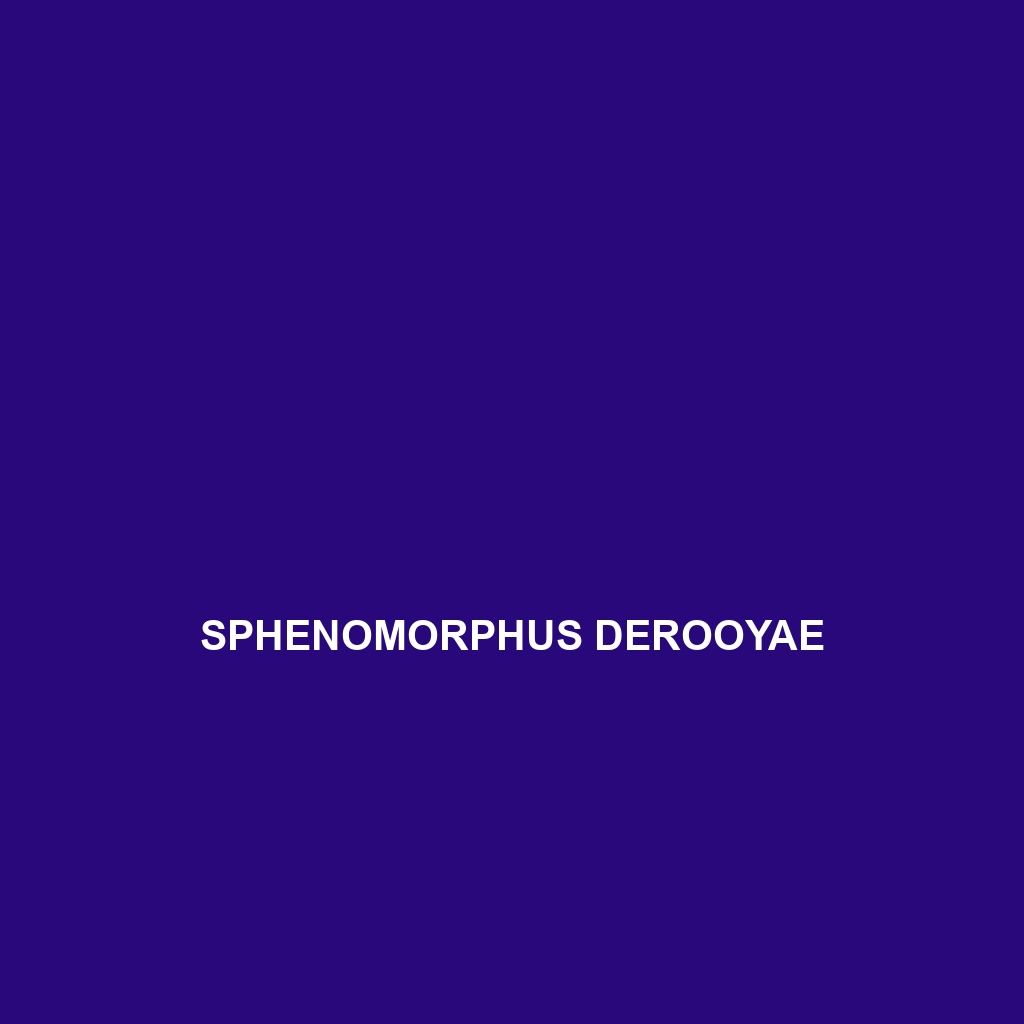Common Name
Sphenomorphus derooyae
Scientific Name
Sphenomorphus derooyae
Habitat
Sphenomorphus derooyae is primarily found in the lush and diverse environments of tropical rainforests. This species thrives in areas characterized by high humidity and abundant rainfall, typical of Southeast Asian rainforests. Its geographic distribution includes parts of Indonesia and Malaysia, where it inhabits the understory and leaf litter layers. The rainforest climate, marked by temperatures ranging from 20°C to 30°C, supports a rich array of flora and fauna, providing essential resources for this species. As an adaptable organism, Sphenomorphus derooyae plays a significant role in this biodiverse ecosystem, often found near streams and damp areas, vital for its survival.
Physical Characteristics
Sphenomorphus derooyae exhibits a range of physical features that contribute to its identification. This small lizard typically measures between 8 to 12 centimeters in length, with a slender, elongated body. Its skin is adorned with striking color patterns, including earthy tones of brown and green, which aid in camouflage among the foliage. Unique to this species are its smooth, shiny scales that reflect light, enhancing its ability to blend into the forest environment. The limbs are short yet agile, allowing for swift movement through the underbrush. The presence of a distinctive lateral stripe running along its body further distinguishes Sphenomorphus derooyae from similar species.
Behavior
The behavior of Sphenomorphus derooyae is largely influenced by its habitat and environmental conditions. Known for its predominantly nocturnal behavior, this lizard emerges at night to hunt and forage for food. During the day, it tends to remain hidden under leaf litter or logs, reducing exposure to predators. Socially, Sphenomorphus derooyae displays territoriality, especially during the breeding season, where males engage in rituals to ward off rivals. Its mating rituals include elaborate displays of coloration and physical posturing that capture the attention of potential mates. These behavioral traits make the species an intriguing subject for herpetologists and wildlife enthusiasts alike.
Diet
Sphenomorphus derooyae is an insectivore, primarily feeding on a wide variety of insects and arthropods found within its tropical habitat. Its diet includes ants, termites, beetles, and other small invertebrates, allowing it to maintain a balanced ecosystem by controlling insect populations. The lizard forages primarily on the forest floor, using its keen vision and quick reflexes to capture prey. This specialized diet highlights the ecological importance of Sphenomorphus derooyae in aiding nutrient cycling and energy flow within its habitat.
Reproduction
The reproductive cycle of Sphenomorphus derooyae is marked by specific mating seasons coinciding with the wet season, which enhances reproductive success due to the abundance of food resources. Males compete for the attention of females through displays of vibrant colors and aggressive posturing. Once mated, females lay clutches of 2 to 6 eggs, typically in hidden locations within the leaf litter to protect them from predators. The incubation period lasts approximately 6 to 8 weeks, after which the hatchlings emerge fully formed. Parents exhibit minimal involvement post-hatching, relying on the natural instincts of the young for survival in the wild.
Conservation Status
As of current assessments, Sphenomorphus derooyae is classified as vulnerable due to habitat loss and degradation from deforestation and urban development. Efforts are underway to conserve its rainforest habitat, but ongoing challenges such as illegal logging and climate change continue to threaten the species’ population. Wildlife conservation organizations are advocating for better land management practices and the establishment of protected areas to ensure the sustainability of Sphenomorphus derooyae and its ecosystem.
Interesting Facts
One interesting fact about Sphenomorphus derooyae is its exceptional ability to blend into its surroundings, a vital adaptation for avoiding predators. Furthermore, this species has been observed exhibiting unique defensive behaviors, such as flattening its body against the ground to become less visible. Another notable aspect is its role in traditional medicine in some local cultures, although this practice raises ethical concerns regarding its conservation.
Role in Ecosystem
Sphenomorphus derooyae plays a critical role in its rainforest ecosystem. As a predator of insects, it helps maintain balance within the food web by regulating insect populations. Additionally, through its diet, this lizard aids in the decomposition process, contributing to nutrient cycling within the forest floor. The presence of Sphenomorphus derooyae is indicative of a healthy ecosystem, as they serve as both prey for larger predators and as contributors to biodiversity.
